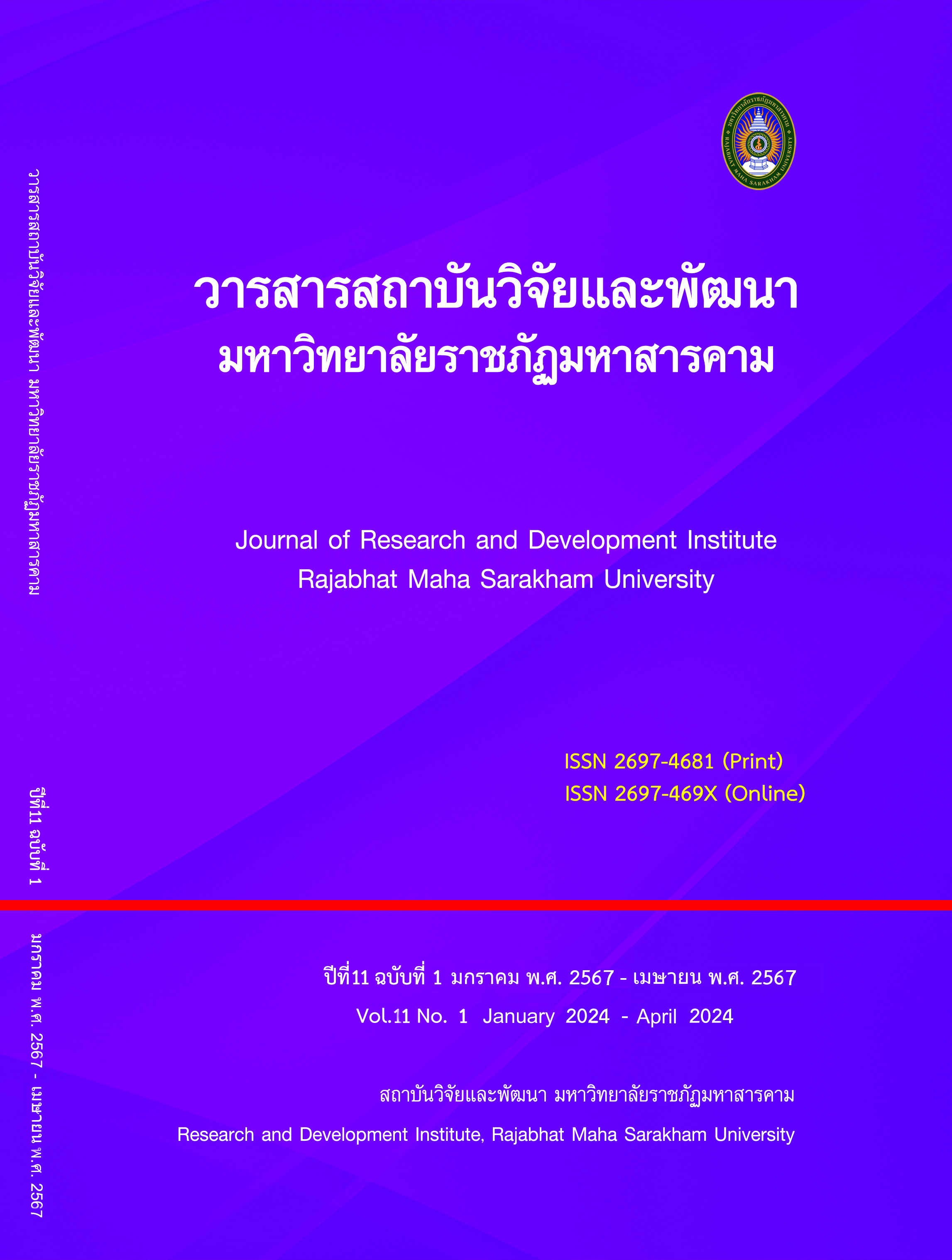THE DEVELOPMENT OF LISTENING - SPEAKING CHINESE BASED ON COMMUNICATIVE LANGUAGE TEACHING (CLT) FOR 8TH GRADE STUDENT
Keywords:
Communicative Language Teaching, Listening Skills, Satisfaction, Speaking SkillsAbstract
The purposes of this study were 1) to develop the listening and speaking Chinese lesson plans in eight grade students based on Communicative Language Teaching (CLT) with the efficiency value of 75/75 2) The study also aimed to examine students’ listening and speaking skills with 75% of standardized criterion. Moreover, the study was 4) to determine students’ satisfaction towards the CLT instructions. Using a cluster random sampling technique, a total of 42 eight - grade students at kalasinpittayasan School, Kalasin province in second semester of academic year 2022, were involved. 12 lesson plans were developed to organize the CLT instructions. A competency test, designed in 30 - item format, was used to assess students’ listening and speaking skills, and a 5 - Likert scale questionnaire was employed to assess students’ satisfaction. Descriptive statistical analyses: percentage, mean, standard deviation, and One Sample t-test were performed in data analysis processes.
The results of the study were as follows:
1) the efficiency value of the listening and speaking instructions was found 80.13/82.06
2) The students’ listening and speaking skills were found developing higher than 75% of standardized criterion and significance at .05 level
3) Students overall satisfaction towards the CLT instructions was very satisfied.
References
Baker, J., & Westrup, H. (2000). The English language teacher’s handbook: How to
teach large classes with few resources. London, England: VSO/Continuum.
Brown, H. D. (1994). Teaching by principles: An interactive approach to language
pedagogy. Englewood Cliffs, NJ: Prentice Hall Regents.
Jiraporn, T. (2017). Development of Chinese Communication Ability by
Teaching Language for Communication with Song for Mathayom Suksa 2
Students at Na Chaleang Pittayakom School Nong Phai District, Phetchabun
Province.Thesis: Uttaradit Rajabhat University.
Juthamas, C. (2018). Development of listening and spoken English proficiency
of Mathayom Suksa 3 students according to the guidelines of language
teaching for communication.
Littlewood, W. (1981). Communicative Language Teaching: An Introduction.
Cambridge : Cambridge University Press.
Ministry of Education (2008). Core Curriculum of Basic Education B.E. 2008. Bangkok : Agriculture Authority of Thailand.
Tanakorn, S. (2015). "Development of a teaching model for foreign language
learning strategies to enhance listening and spoken English for undergraduate
students." Doctor of Philosophy Thesis, Department of Curriculum and
Instruction, Graduate School, Silpakorn University.
Teeraporn, K. (2010). Factors affecting English Speaking among 2nd Year English
Language Students. Faculty of Education, Rajabhat University in Bangkok. Suan
Sunandha Rajabhat Rajabhat District, Bangkok.
Nathan, X. (2012). The importance of Mandarin in the country. Retrieved from
https://www.gotoknow.org/posts/236881
Rixon, S. (1986). Developing Listening Skill. London: Macmillan Publisher.
Ronnaphon, M. (2008). Teaching Chinese in Thailand. Bangkok : Center
for Chinese Studies, Institute of Asian Studies.
SaiPin, R. (2011). Creating a series of English teaching activities for communication on "Moment inLife" using the theory of teaching English for communication For 4th grade students, Nareerat School, Phrae. Uttaradit University : Uttaradit Rajabhat University.
Downloads
Published
How to Cite
Issue
Section
License
Copyright (c) 2024 ธีรภัทร์ บุญหล้า, ทิพาพร สุจารี

This work is licensed under a Creative Commons Attribution-NonCommercial-NoDerivatives 4.0 International License.
Articles that are published are copyrighted by the authors of the articles






